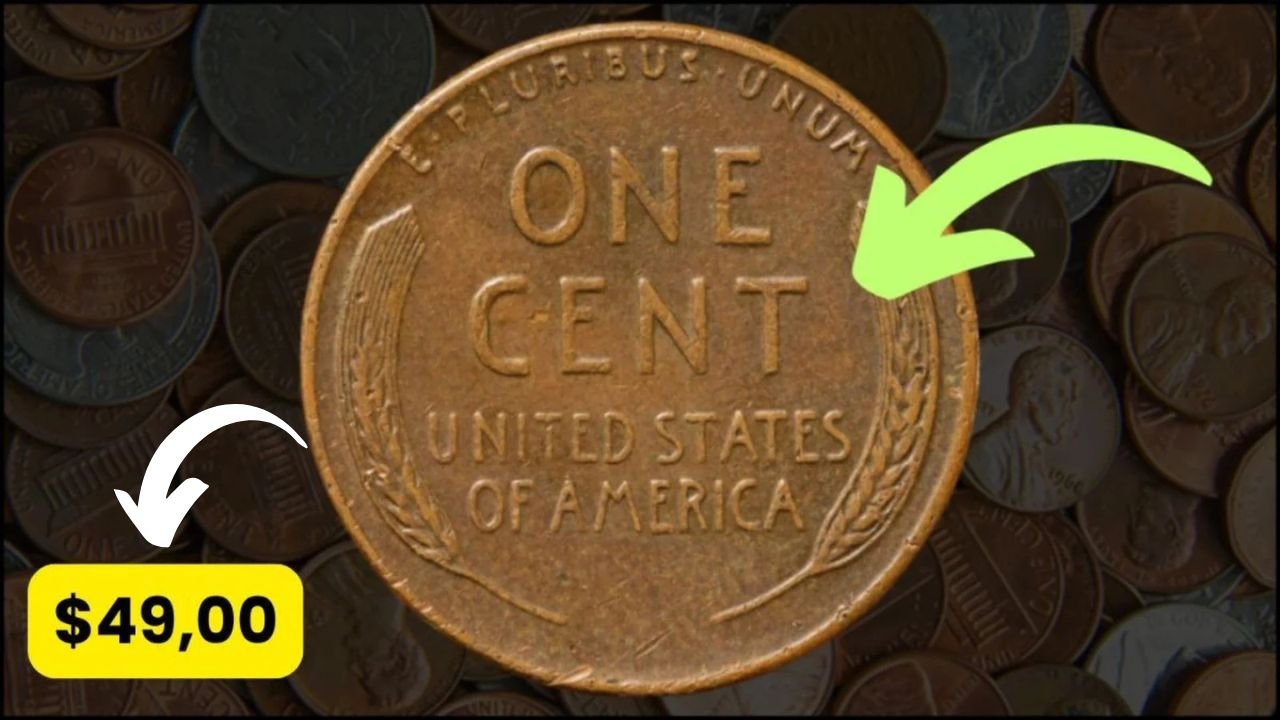The Lincoln Wheat Penny, first introduced in 1909 to honor President Abraham Lincoln’s 100th birthday, remains one of the most collected coins in U.S. history. While most Wheat Pennies carry only modest value, certain rare varieties have shocked collectors with jaw-dropping prices. One such example is a Lincoln Wheat Penny valued at nearly $49,000, raising the question: could one still be hiding in circulation today?
The History of the Lincoln Wheat Penny
The Wheat Penny, officially known as the Lincoln Cent, was minted from 1909 to 1958. Its design featured Lincoln’s profile on the front (obverse) and two wheat stalks on the reverse—symbolizing prosperity and unity. This iconic coin was later replaced by the Lincoln Memorial design in 1959.
The Rare Bicentennial Quarter Valued at $2.5 Billion, Still in Circulation
Due to its long production run, millions were minted, but not all Wheat Pennies are created equal. Rare dates, minting errors, and special editions can command extraordinary value.
Why One Wheat Penny is Worth $49,000
The high valuation comes from a handful of unique features:
-
Rare Minting Errors – Some pennies were struck off-center, with double dies, or on the wrong metal planchets.
-
Low Mintage Years – Certain dates, such as 1909-S VDB, 1914-D, or 1931-S, had very limited production, making them rare finds.
-
Condition (Grade) – Coins in uncirculated or near-perfect condition can bring in tens of thousands of dollars at auction.
One particular specimen with a combination of rarity, historical value, and pristine condition has been appraised at nearly $49,000.
Still in Circulation?
While most valuable Wheat Pennies have already been discovered by collectors, some experts believe that a few may still exist in circulation. It is not impossible for someone to find one in old coin jars, bank rolls, or even as pocket change. The odds are slim, but history has shown that rare coins do occasionally surface unexpectedly.
How to Identify a Valuable Wheat Penny
If you come across a Wheat Penny, here are a few things to check:
-
Look at the Date & Mint Mark – Scarce years and specific mint locations (like San Francisco “S” or Denver “D”) are often worth more.
-
Check for Errors – Double-die obverse, off-center strikes, or misprints can significantly increase value.
-
Assess the Condition – The sharper and more detailed the coin, the higher its potential value.
-
Consult an Expert – Professional grading services like PCGS or NGC can authenticate and appraise your coin.
Final Thoughts
The story of a Lincoln Wheat Penny valued at $49,000 has reignited excitement among collectors and everyday Americans alike. While the chances of stumbling upon such a rare treasure in circulation are slim, it’s always worth checking your change. After all, a small copper coin could turn out to be a hidden fortune.
FAQs on the Lincoln Wheat Penny Valued at $49,000
1. Which Lincoln Wheat Pennies are the most valuable?
The most sought-after Wheat Pennies include the 1909-S VDB, 1914-D, 1922 No D, 1931-S, and 1943 Copper Penny. These can range from hundreds to tens of thousands of dollars, depending on condition.
2. How can I tell if my Wheat Penny is rare?
Check the date and mint mark carefully. Look for errors like double-die strikes, off-center designs, or unusual metal compositions. If your coin is uncirculated or in pristine condition, it may have significant value.
3. Are Wheat Pennies still in circulation today?
While most Wheat Pennies were removed from circulation decades ago, some are occasionally found in coin rolls, bank bags, or old collections. The chance is slim but not impossible.
4. Where can I sell a valuable Wheat Penny?
You can sell rare Wheat Pennies through numismatic auctions, coin dealers, online marketplaces, or certified grading services. Professional grading (PCGS, NGC) is highly recommended for high-value coins.
5. What makes the $49,000 Lincoln Wheat Penny so special?
Its rarity, minting error, and excellent preservation combined to make it extraordinarily valuable. Collectors pay premium prices for coins with unique historical and production traits.




